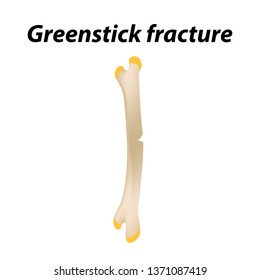Be Prepared To Decipher The Intriguing Mobile Interactions Associated With Cold Laser Therapy And Its Usage Of Light For The Function Of Healing. Immerse Yourself Additionally Into The Realm Of Scientific Research!
Be Prepared To Decipher The Intriguing Mobile Interactions Associated With Cold Laser Therapy And Its Usage Of Light For The Function Of Healing. Immerse Yourself Additionally Into The Realm Of Scientific Research!
Blog Article
Short Article Created By-Krog Daley
You may have come across cold laser therapy as an encouraging therapy option for numerous conditions, yet have you ever asked yourself exactly how it actually works on a cellular level? Comprehending the systems behind this therapy can clarify its performance in advertising healing and decreasing swelling. By exploring the scientific research behind cold laser therapy, you'll gain understandings into the remarkable ways in which light can influence mobile processes and help with cells repair work.
How Cold Laser Therapy Works
To comprehend exactly how cold laser therapy functions, you need to understand the basic principles of exactly how light energy engages with organic tissues. Cold laser treatment, also referred to as low-level laser treatment (LLLT), uses specific wavelengths of light to permeate the skin and target hidden cells. Unlike the extreme lasers utilized in surgical procedures, cold lasers discharge low degrees of light that don't create warm or cause damages to the cells.
When these gentle light waves reach the cells, they're taken in by components called chromophores, such as cytochrome c oxidase in mitochondria. more info here causes a collection of organic feedbacks, consisting of raised mobile energy manufacturing and the launch of nitric oxide, which boosts blood flow and lowers inflammation.
Moreover, the light power can likewise promote the manufacturing of adenosine triphosphate (ATP), the energy money of cells, assisting in cellular repair work and regrowth procedures.
Basically, cold laser therapy uses the power of light power to promote recovery and alleviate pain in a non-invasive and gentle manner.
Mechanisms of Activity
Exactly how does cold laser treatment actually work to produce its therapeutic impacts on biological tissues?
https://hypebae.com/2022/2/lyma-portable-laser-therapy-lucy-goff-skincare-wellness-technology-interview , likewise called low-level laser therapy (LLLT), operates via a procedure referred to as photobiomodulation. When the cold laser is applied to the skin, the light energy passes through the cells and is taken in by chromophores within the cells.
These chromophores, such as cytochrome c oxidase in the mitochondria, are then boosted by the light power, causing a waterfall of organic reactions. One crucial mechanism of action is the improvement of cellular metabolic process.
The absorbed light energy boosts ATP manufacturing in the mitochondria, which is essential for mobile function and repair work. Additionally, cold laser treatment helps to lower inflammation by preventing inflammatory arbitrators and promoting the release of anti-inflammatory cytokines.
This anti-inflammatory result adds to discomfort relief and tissue recovery.
Therapeutic Impacts
Recognizing the healing effects of cold laser therapy involves acknowledging exactly how the enhanced cellular metabolic process and anti-inflammatory buildings add to its favorable outcomes on biological tissues.
When the cold laser is applied to the damaged area, it promotes the mitochondria within the cells, leading to raised production of adenosine triphosphate (ATP), which is essential for cellular function and fixing. This boost in cellular energy increases the recovery process by advertising cells regeneration and minimizing swelling.
Additionally, the anti-inflammatory properties of cold laser therapy aid to lower discomfort and swelling in the targeted area. By preventing inflammatory moderators and promoting the launch of anti-inflammatory cytokines, cold laser therapy aids in minimizing pain and improving the overall recovery feedback.
This reduction in inflammation not only provides immediate alleviation but likewise sustains lasting cells repair service.
Final thought
In conclusion, cold laser treatment works by boosting cellular repair work and tissue regrowth via photobiomodulation. Its anti-inflammatory properties supply discomfort relief and reduce swelling by preventing inflammatory arbitrators.
This treatment uses a thorough approach to recovery, providing both prompt alleviation and lasting cells repair advantages.
With its systems of action, cold laser therapy verifies to be a reliable and encouraging treatment option for a variety of conditions.
